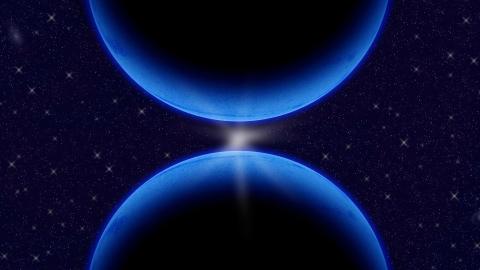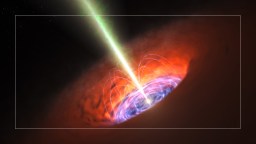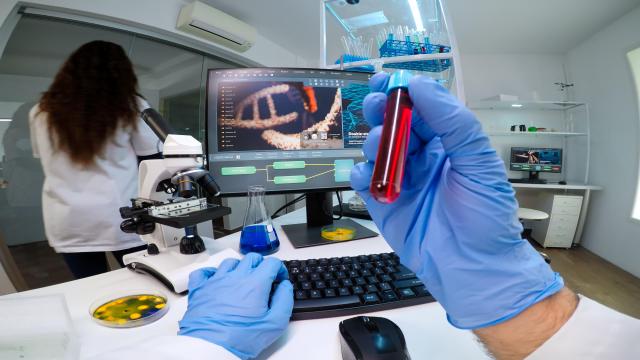‘Spacekime theory’ could speed up research and heal the rift in physics

Credit: marcoemilio via Adobe Stock
- Our linear model of time may be holding back scientific progress.
- Spacekime theory can help us better understand the development of diseases, financial and environmental events, and even the human brain.
- This theory helps us better utilize big data, develop AI, and can even solve inconsistencies in physics.
We take for granted the western concept of linear time. In ancient Greece, time was cyclical and if the Big Bounce theory is true, they were right. In Buddhism, there is only the eternal now. Both the past and the future are illusions. Meanwhile, the Amondawa people of the Amazon, a group that first made contact with the outside world in 1986, have no abstract concept of time. While we think we know time pretty well, some scientists believe our linear model hobbles scientific progress. We’re missing whole dimensions of time, in this view, and our limited perception could be the last obstacle to a sweeping theory of everything.
Theoretical physicist Itzhak Bars of the University of Southern California, Los Angeles, is the most famous scientist with such a hypothesis, known as two-time physics. Here, time is 2D, visualized as a curved plane interwoven into the fabric of the “normal” dimensions—up-down, left-right, and backward-forward. While the hypothesis is over a decade old, Bars isn’t the only scientist with such an idea. But what’s different with spacekime theory is that it uses a data analytics approach, rather than a physics one. And while it posits that there are at least two dimensions of time, it allows for up to five.
In the spacekime model, space is 5D. Besides the ones we normally encounter, the extra dimensions are so infinitesimally small, we never notice them. This relates to the Kaluza–Klein theory developed in the early 20th century, which stated that there might be an extra, microscopic dimension of space. In this view, space would be curved like the surface of Earth. And like Earth, those who travel the entire distance would, eventually, loop back to their place of origin.
Kaluza-Klein theory unified electromagnetism and gravity, but wasn’t accepted at the time, although it did help in the search for quantum gravity. The concept of additional dimensions was revived in the 1990s with Paul Wesson’sSpace-Time-Matter Consortium. Today, proponents of superstring theory say there may be as many as 10 different dimensions, including nine of space and one of time.
The Spacekime model
Spacekime theory was developed by two data scientists. Dr. Ivo Dinov is the University of Michigan’s SOCR Director, as well as a professor of Health Behavior and Biological Sciences, and Computational Medicine and Bioinformatics. SOCR stands for: Statistics Online Computational Resource designs. Dr. Dinov is an expert in “mathematical modeling, statistical analysis, computational processing, scientific visualization of large datasets (Big Data) and predictive health analytics.” His research has focused on mathematical modeling, statistical inference, and biomedical computing.
His colleague, Dr. Milen Velchev Velev, is an associate professor at the Prof. Dr. A. Zlatarov University in Bulgaria. He studies relativistic mechanics in multiple time dimensions, and his interests include “applied mathematics, special and general relativity, quantum mechanics, cosmology, philosophy of science, the nature of space and time, chaos theory, mathematical economics, and micro-and-macroeconomics.”
Drs. Dinov and Velev began developing spacekime theory around four or five years ago, while working with big data in the healthcare field. “We started looking at data that intrinsically has a temporal dimension to it,” Dr. Dinov told me during a video chat. “It’s called longitudinal or time varying data, longitudinal time variance—it has many, many names. This is data that varies with time. In biomedicine, this is the de facto, standard data. All big health data is characterized by space, time, phenotypes, genotypes, clinical assessments, and so forth.”
A better way to manage big data
“We started asking big questions,” Dinov said. “Why are our models not really fitting too well? Why do we need so many observations? And then, we started playing around with time. We started digging and experimenting with various things. And then we realized two important facts.
“Number one, if we use what’s called color-coded representations of the complex plane, we can define spacekime, or higher dimensional spacetime, in such a way that it agrees with the common observations that we make in (the longitudinal time series in) ordinary spacetime. That agreement was very important to us, because it basically says, yes, the higher dimensional theory does not contradict our common observations.
“The second realization was that, since this extra dimension of time is imperceptible, we needed to approximate, model, or estimate, one of the unobservable time characteristics, which we call the kime phase. After about a year, we discovered that there is a mathematically elegant tool called the Laplace Transform that allows us to analytically represent time series data as kime-surfaces. Turns out, the spacekime mathematical manifold is a natural, higher dimensional extension of classical Minkowski, four-dimensional spacetime.”
Our understanding of the world is becoming more complex. As a result, we have big data to contend with. How do we find new ways to analyze, interpret and visual such data? Dinov believes spacekime theory can help in some pretty impressive ways. “The result of this multidimensional manifold generalization is that you can make scientific inferences using smaller data samples. This requires that you have a good model or prior knowledge about the phase distribution,” he said. “For instance, we can use spacekime process representation to better understand the development or pathogenesis to model the distributions of certain diseases.
“Suppose we are evaluating fMRIs of Alzheimer’s disease subjects. Assume we know the kime phase distribution for another cohort of patients suffering from amyotrophic lateral sclerosis, Lou Gehrig’s disease. The ALS kime-phase distribution could be used for evaluating the Alzheimer’s patients,” and many other neurodegenerative populations. Dinov also thinks spacekime analytics could help improve political polling, increase our understanding of complex financial and environmental events, and even the innerworkings of the human brain, all without having to take the huge samples required today to make accurate models or predictions. Spacekime theory even offers opportunities to design novel AI analytical techniques. But it goes beyond that.
The problem of time
Spacekime theory can help us make headway on some of the most pernicious inconsistencies in physics, such as Heisenberg’s uncertainty principle and the seemingly irreconcilable rift between quantum physics and general relativity, what’s known as “the problem of time.”
Dinov wrote that the “approach relies on extending the notions of time, events, particles, and wave functions to complex-time (kime), complex-events (kevents), data, and inference-functions.” Basically, working with two points of time allows you to make inferences on a radius of points associated with a certain event. With Heisenberg’s uncertainty principle, according to this model, since time is a plane, a certain particle would be in one position or phase, time-wise, in terms of velocity, and another phase, in terms of position.
This idea of hidden dimensions of time is a little like Plato’s allegory of the cave or how an X-ray signifies what’s underneath, but doesn’t convey a 3D image. From a data science perspective, it all comes down to utility. Dinov believes that if we can calculate the true phase dispersion of complex phenomena, we can better understand and control them.
Drs. Dinov and Velev’s book on spacekime theory comes out this August. It’s called “Data Science: Time Complexity, Inferential Uncertainty, and Spacekime Analytics“.





